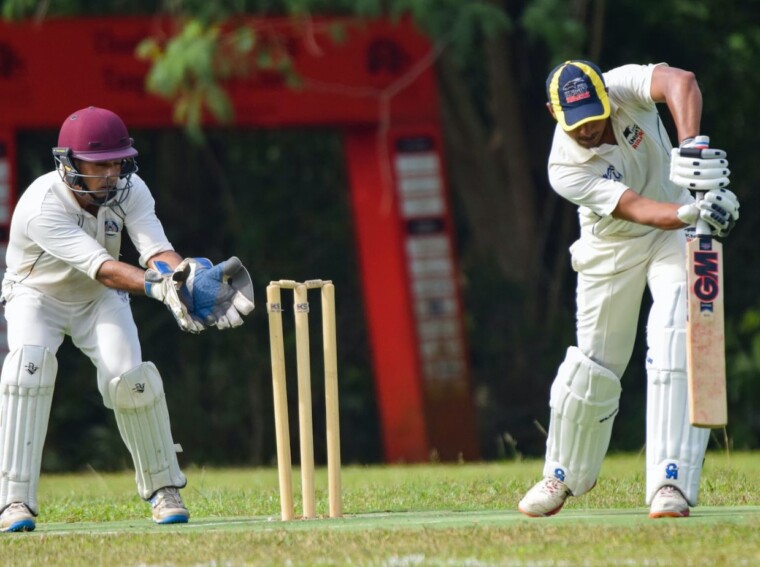Cricket, often referred to as the gentleman’s game, is a sport that has been enjoyed for centuries. With its origins dating back to the 16th century in England, cricket has evolved into a globally recognized game, captivating fans around the world. Whether you’re a seasoned cricket enthusiast or new to the sport, understanding the rules of cricket is essential to fully appreciate and enjoy this thrilling game.
At its core, cricket is played between two teams consisting of eleven players each. The objective is simple: score more runs than the opposing team while defending your wickets. The wickets are made up of three vertical stumps with two bails balanced on top. The bowler from the opposing team attempts to dismiss the batsman by hitting the wickets or inducing them into making an error.
A key highlight in international cricket is undoubtedly the Cricket World Cup. Held every four years, this prestigious tournament brings together teams from various nations competing for ultimate glory. It showcases not only exceptional skills but also fierce rivalries and moments of pure brilliance. From iconic matches to historic performances by legendary cricketers, the Cricket World Cup holds a special place in every fan’s heart.
Welcome to the greatest game – cricket cup, what is cricket. This site will help explain to the absolute beginner some of the basic rules of cricket.
So whether you’re watching an intense match at a stadium or participating in a friendly neighborhood game, understanding and appreciating the rules of cricket will enhance your overall experience and allow you to fully immerse yourself in this fascinating sport. Let’s dive deeper into these rules and unravel all there is to know about one of humanity’s oldest pastimes – cricket!
The Basics of Cricket
Cricket is a popular sport played worldwide, captivating fans with its unique rules and strategies. In this section, I’ll provide you with a brief overview of the basics of cricket.
- Objective: The main objective in cricket is to score more runs than the opposing team while also taking wickets to restrict their scoring. Each team has 11 players, and the game consists of two innings.
- Playing Field: A cricket field is oval-shaped and typically made of grass. It features a rectangular strip called the pitch at the center, where most of the action takes place. On either end of the pitch are wooden structures called stumps, which include three vertical sticks topped by two bails.
- Teams and Positions: Two teams participate in a cricket match – one batting and one bowling/fielding team. The batsmen from the batting team try to score runs, while bowlers from the opposing team aim to dismiss them by hitting the stumps or catching them out.

- Scoring Runs: Batsmen score runs by hitting the ball into open areas on the field and running between wickets placed at each end of the pitch. They can also earn runs if they hit boundaries – four runs for touching or crossing over the boundary rope without bouncing (a boundary) or six runs for clearing it directly (a six).
- Dismissals/Wickets: There are several ways for batsmen to be dismissed or lose their wickets: getting bowled (ball hits stumps), caught (fielder catches ball before it touches ground), run-out (fielder dislodges bails while batsman is running), stumped (wicketkeeper removes bails when batsman is out of crease), or leg before wicket (LBW) when ball hits pad instead of bat directly in line with stumps.
- Overs and Innings: An innings consists of each team having a chance to bat and bowl. Typically, an innings consists of a set number of overs (six balls bowled by a bowler). Common formats include Test matches (four or five days), One Day Internationals (50 overs per side), and Twenty20 matches (20 overs per side).
- Cricket Cups: Cricket tournaments like the World Cup bring together teams from around the world to compete for the prestigious title. These cups showcase the best players, intense rivalries, and thrilling matches that captivate cricket enthusiasts worldwide.

Understanding these basic elements will help you grasp the fundamentals of cricket. As we delve deeper into this article, we’ll explore more advanced rules, strategies, and iconic moments from cricket history. So stay tuned!
Table: Cricket Formats
|
Format |
Overs |
|
Test Matches |
90-120 |
|
One Day Internationals |
50 |
|
Twenty20 Matches |
20 |
Note: Overs may vary depending on specific tournament regulations.
Remember, cricket is an intricate sport with its own unique charm. Whether you’re new to the game or a seasoned fan, embracing its rich heritage and exhilarating moments is what makes following cricket so captivating.


